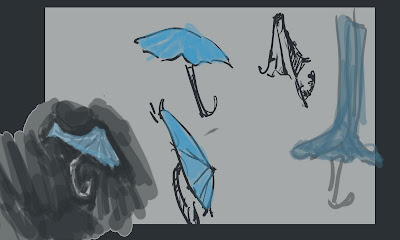
22 Apr 2010
Wardrobe Story: Set Design

21 Apr 2010
Maya Tutorials: Intro to Animation Continued: Walk Cycles
This time Everything arranged in a way for me to do all the walk cycle at one time in these few days. Having missed the very first class when the intro to rigging and animation took place I found it tuf to catch up, to understand the basics from other classes where we moved forward . SO the first walk cycle mechanics took me 6 hours to do, and you can see the quite crappy result of that. But following the progression of 4, then 2 hours, today the last one, the double bounce happy walk cycle took me 1.5 hour :D so I'm pretty happy. Learned alot . Also I was expecting something more painful from animating it in Maya, but as also others have shared, I found it fun :) ( I guess it looks like that after the rigging, which, gladly I did before the animations :D )
P.S. All the riggs are in one older post.
19 Apr 2010
Lascivious Walkcycle
The task was to draw animation of a walk cycle having the characteristics of our object given. SO mine was lascivious walk cycle.
The walk is unnatural - the shoulder and the hand moves together with the same side leg ( whereas in our natural walk they are opposing to keep the balanced walking) and sticking out pelvis out also.
I imagined the walking person firmly taking the step and then dragging the other leg almost with out lifting it form the ground.
So sorry for the quality... :/
12 Apr 2010
Toy Story (1995) - Establishing New Tools to Tell the Story

1995 John Lasseter's Toy Story is the world's first feature-length CGI cartoon, heralding the biggest animation revolution since Steamboat Willie. ( Steamboat Willie is famous for being the first animation with syncronized sound). John Lasseter was the director for the animation.
Company dicided to make the feature-lenght animation about toys after creating an animated short Tin Toy and seeing a potential in developing and producing the idea.
So the story is, as it‘s titeled about Toys. The daily rutine, adventures and lives they experience.
But as it is true to all Pixar aniamtions, regardless the technicall side of it ( wheter it‘s a first-time used computer technology or just generally peace of marvelous CG) the focus is always on th story and the characters, believing that the technical part plays as a tool to convey the idea‘s.
The impact this animation as well as the company created is clearly evident . The production of 3D animation during those 15 years developed and we now get to see other marvelous works such as Monster Inc., Up from the same company, or Shrek, Kung Fu Panda from Dreamworks studio.
11 Apr 2010
The Skeleton Dance (1929) and The Silly Symphonies



In 1928 the sound was first applied to animation by Walt Disney who saw the huge potential (Steamboat Willie was the first animation with synchronized sound). It was then suggested not only to use the sound but base entire animation on it.
Subsequently in 1929 The Skeleton Dance was created (entirely by one animator Ub Iwerks)
It‘s an animated short based little on the story, but heavily on the performance, that‘s as mentioned before, is directed by the music/sound.
It was the first of many series of the Silly Symphonies, animated shorts produced by Walt Disney Productions for the next 10 years. Looney Tunes cartoons known today were inspired by the Silly Symphonies.
Hayao Miyazaki
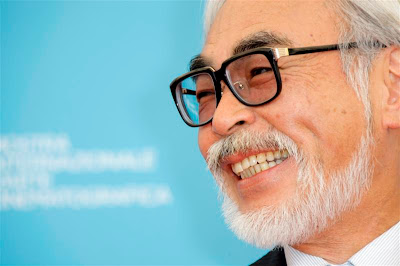
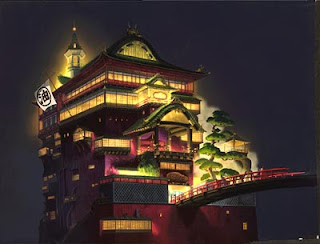


To begin with, Hyao Miyazaki is Japanese animator. And to cut it to the end, he is often titled as god of animation between many world's most famous animators (to give one example, John Lasseter - chief creative officer at Pixar).
According to various sources of information,
His animation never lacks of realism be it objects and characters we are all familiar with or fantastical creatures and places.
For instance. Haku, the dragon from Spirited Away was animated referencing the behaviors of dog (particularly the way jaws work), snake and a dragon. By applying the different characteristics of movement to the character design
And when it comes to Myiazaki‘s heroines, they seem never lack nurturance, compation , that are feminine, on the other hand the unfeminine characteristics like active independence and strength in the face of dangers are what‘s considered to make them so remarkable.
But in fact, if someone was there to look how he constructs his animations, he would definitely find deep thoughts and meanings, not to mention symbols and clues or traditional elements from Japanese culture. Therefor, it could be concluded, his works become a memorable and rich experience.
7 Apr 2010
Snow White and the Seven Dwarfs (1937)



also dubbed as Disney‘s Folly was the first 83 minutes long animated feature that changed the parameters and the format of cartoon. (before that there were mainly only 6-10 minute long animations).It was considered a project insane.
It was also the first animation that released the soundtrack album for the motion picture. To continue even further it was technically brilliants, fascinating techniques, such as realistic, human like animation with the help of the rotoscope and the multiplane camera (special motion picture camera used in the traditional animation process that moves a number of pieces of artwork past the camera at various speeds and at various distances from one another) to imitate 3D effects.
The film also established relatively new thinking about the personalization of characters. The seven dwarfs all had different characterizations that not only were believable and memorable but also separated each one of them as individuality.
This was the second version of Brother Grimm‘s tale of Snowhite ( the first one being five minute long animation in 1933) except the sexual references or violence, more like a sanitized version of the story.
So the story, as probably well known, is about a girl with a rare beauty called Snowhite, who drives her stepmother jealous for this reason. The girl is sent to the woods to be killed there, but fortunately the Hunstman spares her life and lets her go. She then finds a mysterious house and soon after the seven dwarfs, the owners of the place. The story goes to Snowhite being wickedly fooled and killed by the witch (the stepmother) and finally saved by the prince at the very end.
The film literarily opened doors for the many other animated features, since it reestablished the parameters of the animation and made the what first looked as insanity become a norm so today we have many many animated features.
29 Mar 2010
26 Mar 2010
Storyboard for Lascivious Umbrella
24 Mar 2010
Steamboat Willy (1928)
The huge success of the Jazz singer in early 1928 had opened prospect of talking pictures.
Steamboat Willy was the first cartoon created that had synchronized sound in the same years of 1928.
When the animation with the synchronized sound on top was first played for the audience, Walt Disney recalls: "The effect on our little audience was nothing less an electric... It was terrible, but it was wonderful! And it was something new!"
At that time this idea that moving fictional drawn characters could mimic life, that is, talk, make sounds at that time was understood as something magical and thrilling, The sound used was as unreal as the action all of which is evident in Steamboat Willy.
Watching the Animation one perhaps wouldn’t guess it was the first attempt in synchronizing the sound, since animations that followed took the same approach. On the other hand You’d become aware they are a bit jerky and ruff around the edges.
Nevertheless the sound definitely contributes to the grate impact of animation
The Script for the Lascivious Umbrella

We see a wardrobe door.
Hand opens it
Puts the Umbrella in
There we see:
Umbrella after a slight pause notices the raincoat
He… calls for attention (by slightly widening his canopy few times first slightly and slow than a bit faster)
Waits for her response looking at her ( few moments of only slightest moves)
She turns to him and slightly ‘jogges’ showing an interest
He is excited and doesn’t wait to begin the performance
He JUMPS! in the air and POPS! Wide opening the canopy
Gets down bumping the flor a bit and leanes slightly back just to...
Start the shaking of the canopy in the way a peacock shakes his feathers.
Dances around her slightly stopping at a different points ( like just to fix the moment)
(finishes the ‘circle’ around her)
He again leans down to the ground abit (but more than the last time) and slightly closes his canopy
Jumps in the air! ( this time higher and more enthusiastic as well as drawing a curve in the air ( he is next to her and she is slightly turned to him) Popping open in to a hart-shaped canopy
And steadily,like a lightest balloon goes down beating like a hart ( such impression is created by the convulsing outlines or the continuously ‘beating’ colour)
Just before reaching the ground (one fourth of a fall) he comes back to it’s normal canopy-closed shape
And lands in to a split
Makes a slight move towards her to see the reaction/answer.
She’s amazed, she ‘jogges’ now stronger and claps her leaves
(MCU) they are getting closer to each other…
(CU) and closer…
Suddenly!
Doors open wide,
Quickly the hand reaches for ...(everything's seen from the hand angle)
(Hands POV) grabs the puzzled raincoat.
we see a shocked umbrella!(while hearing slapping door sound)
And (‘AAAwwww’) umbrella’s left disappointed… :/
xxx
22 Mar 2010
A Whole Group of Bouncing Balls

Friday we had our second animation workshop, this time focusing on spacing and timing in the animation. With out good timing and spacing you find yourself creating only movement.
Also it is crucial to pay attention to forces such as gravity or frictional forces.
Subsequently, to put it in practise we were asked to animate three different balls ; rubber, bowling and ping-pong balls.
Meg Bisineer strongly recommended first plan the the animation including considerations about the difference of materials and how it can be conveyed in timing and spacing .
This is .. my quit scary looking plans of animation, but they were helpfull. I spent half of the time planing the movement and the other half just redrawing and correcting. Still.. I wouldn;t guess the tipes of ball bouncing..
18 Mar 2010
Little Nemo (1911) - Winsor McCay
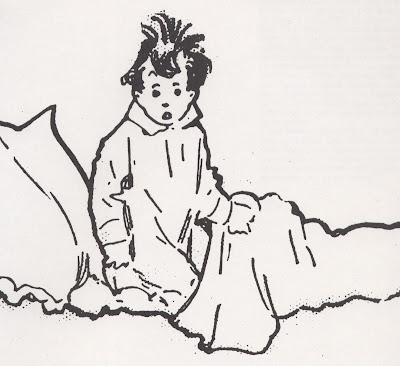
Simply put, Little Nemo revolutionized the comic strip.
While he wasn't the first person to make an animated cartoon, he was the man who defined the industry. The quality of his cartoons would not be matched for another 25 years. His pacing and understanding of the medium was far ahead of his time. And he drew all of the 4,000 cels of his first film, Little Nemo, himself! The Little Nemo film was released to theater and used in his act, as was his second. How a Mosquito Operates - this 6,000 drawings long. When these films were released into wider distribution, McCay's fame spread, especially to the fledgling animation community.
17 Mar 2010
Jason and the Argonauts (1963) - Don Chaffey

Jason is prophesied to take the throne of Thessaly and he travels to Colchis to find the Golden Fleece with the assembled crew of the finest men in Greece, including Hercules. Their voyage is full of battles against harpies, a giant bronze Talos, a hydra, and an animated skeleton army, all brought to life by Ray Harryhausen.

Ray Harryhausen is a Creator of Special Visual Effects in this film.
He created six and half skeletons (the legs are missing on one), the Hydra, Talos and the Harpies for the film. And it is estimated, he executed 184,800 movements.
The construction of the famous skeleton fight scene took something about 4 and a half month to create and that lasted for just a bit longer than 4 minutes on the screen. It was alaborious work that demanded devotion to it.
But this devotion comes from strong passion for what he is doing. He tells himself that from the very early days he remembers being fascinated by dinosaurs and monsters and that the film King Kong (1933) influenced him enormously , in fact changed his life. From that point he started looking for answers - how the monster was brought to life, started constructing his own model and attending various classes toimprove his designs as well as the ability to produce his visions as accurately as possible.
"He had discovered ... that drawings helped visualise what was in the imagination. Without that visualisation people wouldn’t be able to understand what you were talking about. So Ray learned that this was just as important a part of the process of animation as animation itself. "


Watching the film I found the most fascinating , the animation of Talos, huge metal statue. I couldn't believe its just a 15 inch figure as I read after watching the film. You could tell from watching the animation that this is a enormous object made out of metal. It is the moves were so specific and believable - the performance was believable.
Also I thing the scene was successful because there were no interactions with people ( like in the scene with skeletons, where Jason and his crew seemingly fight with the air ).
So the performance of monsters in the film is convincing, even though if it is not as smooth as we are used to.
http://www.rayharryhausen.com/index.php - official website of Ray Harryhausen
15 Mar 2010
King Kong (1933) - Merian C. Cooper and Ernest Scheodsack

It is a great monster movie that is even more stunning when you remind yourself that a lot of efects were used for the first time in film history.
The playing monsters (King Kong, Dinosaurs) are not there only to roar and beat its chest, but they interact with the world and objects in it– taring apart dinosaur, grabbing and throwing away characters and doing all the things that would normally happen if you were to imagine they exist in real life, not in a film.
I noticed the masterful use of layers: often the background was a screen with action projected on it (like a film screen), midground was where stop motion action or acting took place and there were props and setting to smartly blend it all in the foreground . For instance the scene where Ann looked down how the beast was fighting with a giant snake. Ann on the rocks was a film played on screen, Kong’s and snake fight was a stop motion performance and in the foreground there were rocks where we saw captain waiting for a good moment to run to Ann .
Painted backgrounds, stop motion animation, actors performance and actual settings, Layers of images blend unnoticeably.
Attention to performance. Meg Bizineer said Friday in our Animation Workshop- it is all about a convincing performance.
So O'Brien studied the movements of gorillas in zoos and other large animals to develop his characterization of Kong as well as attending professional wrestling matches searching for ideas of how to make his creation battle the other prehistoric denizens of Skull Island. It is this attention to the performance of his models that sets O'Brien's work apart as a pinnacle of the art.
Despite the genius construction of scenes special effects and convincing performance the way it’s editted suggested the continuity of the story. For instance, where we see the beast smashing the train. It could look simply a peace of stop motion animation , but the continuous cutting to people in the train falling, lights turning down, really suggests the horrible experience taking place.
Roger Ebert marked It's simply to observe this monster movie, pointed the way toward the current era of special effects, science fiction, cataclysmic destruction, and nonstop shocks. "King Kong" is the father of "Jurassic Park," the "Alien" movies and countless other stories in which heroes are terrified by skillful special effects.
This film still does it’s magic.
Phantasmagorie (1908) Emilie Cohl
One action morphs into another one or disappears gradually preparing the space for the other to take place. Characters transform into objects in order to keep continuous relationship between them ( for instance one character, the champagne bottle, takes the clown captive then turns into a blossoming flower setting him free and so on),
So you become aware of the good continuity kept throughout the animation.
Phantasmagorie (Fantasmagorie) is considered to be the first fully animated film ever made.
Humorous Phases of Funny Faces (1906) Stuart Blackton

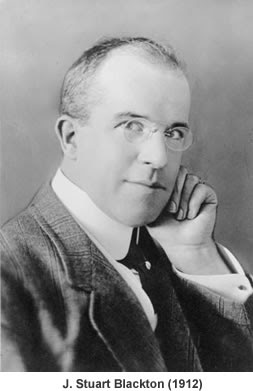
AT the beginning of the animation we se a face actually drawn by hand. And then suddenly a woman figure next to the already drawn man ‘draws itself’ magically.
We see expressions of both change in time. At the very end man blows a ball of smoke into the womens face.
James Stuart Blackton, the creator of this film, is considered to be the father of the animated cartoon.
12 Mar 2010
Getting to Know Characters
11 Mar 2010
Homage to Eadweard Muybridge (1877-1885)
Eadweard Muybridge is known as father of animation.He first divided second into fractions (frames) and captured the ordinary movement of human (as well as horses, dogs, cats etc. ) in a way never seen before, showing each stage of walking cycle and other moves ( he proved that there is a moment when all four of horse legs are in the air when running).
The work he did found place in both art and science.
10 Mar 2010
Gertie the Dinosaur (Winsor McCay, 1914)
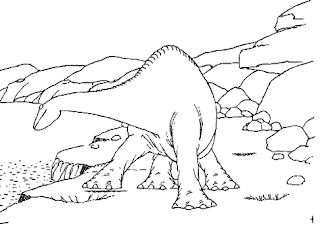
The very first steps of animation.
WInsor McCay interacts with animated dinosaur and at the very end joines her in the animation.
Its hard to be too interested in this animation, but this is to be apreciated because it's one of the first live action/ animation hybrids.
There were specific details giving, probably comedic efect to the animation, monotonious repetition of certain moves ( head swinging etc.), the weightlessness of the dinosaur when jumping and few more things.
On the other hand, concidering it was one of the very first animations, the attention to slightest moves of tail, of searching-head and so on is what gives life to Gertie the cute dinosaur :D
The dialogue.. "are you in a habit of seing things?" ... :D ... That's all I have to say.
http://www.youtube.com/watch?v=UY40DHs9vc4 - to see the animation.


